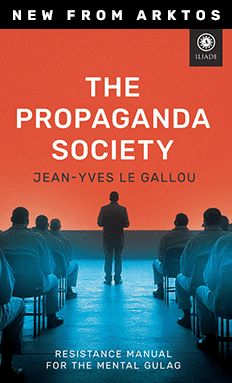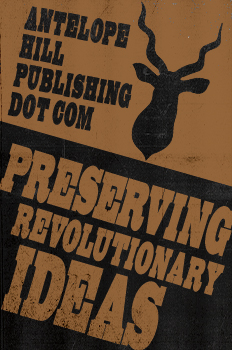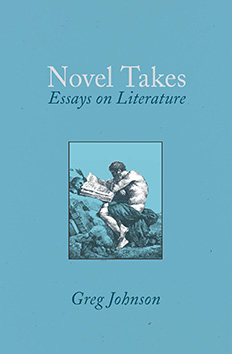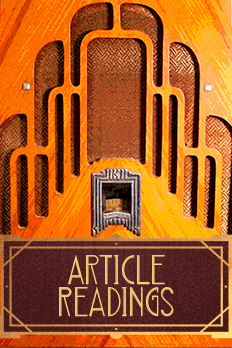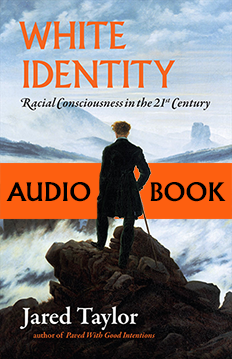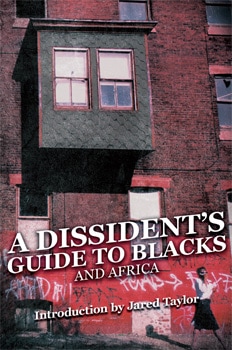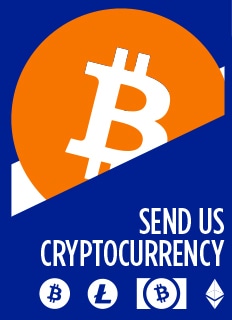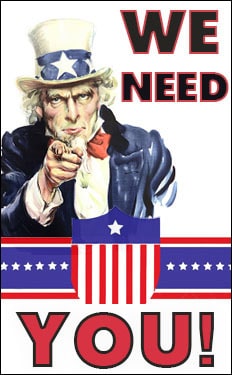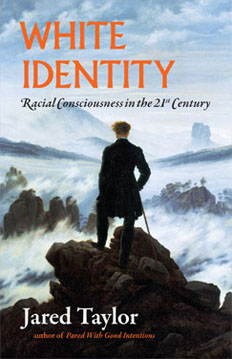Andean Storm Troopers
Michael Radu, FrontPageMag.com, February 9, 2005
While President Bush’s sweeping vision of worldwide democracy was never more vividly conveyed than in his recent inaugural speech, he has thus far failed to acknowledge an alarming anti-democratic movement festering within America’s own hemisphere: the increased radicalization of Indians in South America’s Andean region and their assumption of anti-democratic, reactionary and strikingly fascistic attitudes. This trend is increasingly powerful in Bolivia, Ecuador and Peru and, if not dealt with quickly, will lead to the region’s collapse into a political, economic and social Stone Age, posing a danger to the entire world.
In addition to their vocal opposition to capitalism, the United States and democracy—all characteristics that explain their close ties to the Left in their countries as well as to the Chavez regime in Venezuela and to Castro’s Cuba—these movements are also openly racist. Indeed, they advocate a return to the pre—Columbian Inca state, with the European cultural and ethnic (i.e. “white”) additions removed—by force. In any other circumstance, the combination of racism and historic nostalgia would instantly produce cries of fascism from the politically correct Left. But, not surprisingly, it views the situation in South America far differently—after all, to the Left, the “oppressed” races cannot be racist, only the white “oppressors” can and are.
In Bolivia, this fascistic trend is politically represented by the Movement Toward Socialism (MAS), led by Evo Morales and Felipe Quispe (aka “el Mallku,” the Condor), both Aymaras. Morales represents coca producers and was a runner-up in the country’s latest presidential election. Quispe, a convicted terrorist in the 1980s, is now a federal deputy from La Paz department and head of the Pachacuti Indigenous Movement and the Sole Sindical Confederation of Campesino Workers of Bolivia (CSUTCB). Using violence and threats, these groups managed to force the unconstitutional removal from office of (twice) democratically elected President Gonzalo Sanchez de Losada in 2003.
In Ecuador, the Pachacutik organization of Quechua speakers, the Confederation of Indigenous Nationalities of Ecuador (CONAIE), led by Leonidas Iza, and Humberto Cholango’s Confederation of Peoples of Quechua Nationality of Ecuador (ECUARUNARI), allied with “progressive” military officers, overthrew the democratically elected president, Gustavo Noboa, in 2002.
In both Bolivia and Ecuador, the unconstitutional and violent removal of freely elected presidents was temporarily mitigated by the succession of politically weak but elected vice-presidents—something seen by the radical Indians as a first step to power and also, alarmingly, accepted by Washington.
In Peru, the Humala brothers—Ollanta and Antauro—in 2000 led a short-lived attempted coup against then-president Fujimori and were arrested but immediately released by the (unelected) post-Fujimori regime of Valentin Paniagua. In that country, Indian radicalism has at its forefront the Humala family’s Movimiento Político Nacionalista (Nationalist Peruvian Movement, MPN), which is better known as “etnocacerista.” The Humalas identify themselves with the pre-Inca Chanka culture of southeastern Peru and, incongrously, with Andrés Avelino Cáceres (hence “etnocacerista”), a general who continued Peru’s war with Chile (1879—83) after it was lost and later became president of Peru. Cáceres was not an Indian, but is a symbol of MPN’s open hatred for Chile.
But the closer one gets to the Bolivian border around Lake Tititcaca, the more indications there are that anti-white racism and anti-democratic lawlessness in the name of “Aymara rights”—including the lynching of the elected mayor in the border town of Ilave—are being promoted by Morales, Quispe and their ilk.
On December 30, 2004, a group of some 200 armed individuals, all members of the MPN-Etnocacerista and led by then-Peruvian army major Antauro Humala Tasso, captured the police post in the regional capital of Andahuaylas, in the Peruvian Andes. After a few days of futile attempts to provoke a mass rebellion and unsuccessful negotiations with the government, the group demanded the resignation of elected President Alejandro Toledo. After murdering four policemen, Humala surrendered—some say was captured—as did his followers.
The history of the Humalas’”movement” is largely typical of the entire regional phenomenon. The ideologue of the movement is Isaac Humala Núñez, head of the family and father of Antauro and Ollanta, the latter of whom is seen by his followers as its spiritual and strategic leader.
Isaac is also a self-proclaimed subversive: “A patriot has to be,” he says. “Christ was and so are we.” His Instituto de Estudios Etnogeopolíticos (IEE) is the brain trust of the MPN, which he founded in 1989. Among the MPN’s beliefs, according to Isaac Humala, is that “The human species had four races, of which one is practically separate, the white one that dominates the world. The yellow has two powers, China and Japan, and the Black, although without the same weight as the others, at least dominates its own continent. On the other hand, ours does not govern anywhere.”[i][1] Like their associated Bolivian and Ecuadorian Indian movements and friends, the Humalas make no secret of their racist, anti-white, anti-European and, especially, anti-American sentiments. That, by itself, is interesting, considering their own family background.
Isaac Humala himself is a well-educated lawyer; although he does speak Quechua (but not Aymara). He was born in Ayacuycho, infamous as the cradle of the Maoist Shining Path; his children are named, folklorically, Ulysses, Ivoska, Ollanta (43), Antauro (42), Pachacutec, Kusiqoyllor, and Ima Sumac. Both Antauro and Ollanta were educated at the elite—and certainly non-indigenous—Franco-Peruano High School, which, incidentally, Antauro’s own children attend. Daughter Kusiqoyllor may have a Quechua name, but she is, or was until recently, a trained biologist in France, and is married, like all her sisters, to a European. As for the boys, Ollanta earned an M.A. from the Catholic University in Lima; Antauro, the “wild one,” had one of his blonde romantic interests wear a dark wig, in order to conceal his “impure” preferences. Both brothers went to the military academy and became officers: Antauro retired in 1988 as a major, Ollanta served as a lieutenant colonel and military attaché in Paris and Seoul until his forced retirement at the end of 2004.
The MPN is centered on a group of a few hundred former army soldiers—the “reservists,” mostly of Indian or “mestizo” (mixed race) blood, called “cholos” in Peru—from the southern provinces. The reservists keep their uniforms (contrary to law), organize parades, and generally play a paramilitary, highly ideological role similar to the early Nazi storm troopers or Mussolini’s Blackshirts.
For those who remember the origins and nature of fascism and Nazism, it is significant that their common characteristics—racism, a romantic and false belief in pseudo-historical myths, hatred for democracy and capitalism—and those of all these Indian movements appear strikingly similar. Quispe, the Ecuadoran CONAIE and Pachakuti groups, as well as MPN, all share the ultimate goal of reconstituting the pre-Colombian Inca Empire, Tihuantisuyo, from Ecuador to Northern Chile, including all of Bolivia and Peru and parts of Argentina. When Quispe declares that the main objective of his Movimiento Indígena Pachacuti is to establish a “Republic of Qollasuyo”—the name of the easternmost of the Inca Empire’s four provinces—he may as well join the Humalas’ dream of re-establishing the whole empire. Indeed, as Ollanta himself has stated, “We contemplate a Tahuantinsuyo Motherland, which will comprise Perú, Bolivia, Ecuador, the north of Chile and the Argentine northwest.” [ii][2]
How that would function and how it would be accomplished is also clear, again according to Quispe: The “Republic of Qollasuyo” would be one in which “there will be neither poor nor rich, in which one would use barter and take care of the environment . . . To reach this change much blood and sacrifice is required, but we will not reach it through Parliament. Talking in Parliament we will solve nothing or even strengthen the system.” [iii][3] Quispe’s plan would also solve the “problem” that many present inhabitants of that area are what Isaac Humala calls “settlers” of an alien race—i.e., people of European origin. Antauro Humala’s solution, not different from Quispe’s, is their removal, with the former advocating mass executions of the “white” ruling elites of Peru, for “treason” to his ideals. President Alejandro Toledo, Peru’s first “cholo” president and self-defined “stubborn and rebellious Indian,” is seen as just another traitor. As to who should rule, Isaac Humala nominates an “intelligencia, well paid and dedicated to thinking in the welfare of our future generations”—in other words, people like him.[iv][4]
The Indio-fascists are closely linked to each other, with essential outside help. Thus, in Peru, a certain indigenous group, “Llapanchik,” is related to Evo Morales’ MAS and, one must add, has at least one supporter, Michel Martínez, in the Peruvian Congress. The Humalas acclaimed Venezuelan president Hugo Chávez when he visited Peru, and they themselves traveled repeatedly to Caracas, where they also met Evo Morales. Antauro declares himself “Friend of the Ecuadoran indigenous of CONAIE, but also of Evo Morales and Felipe Quispe in Bolivia…I consider myself brother of the ideas of Hugo Chávez…[and] admirer of the “nationalist struggle of the Cuban Revolution.”[v][5]
The admiration is mutual. Castro invites Indian leaders like Morales and Iza to his various conferences criticizing “neoliberalism” and Washington; Chavez does the same and, while in Bolivia, openly stated his support for Morales and Quispe’s territorial claims on Chile. All of these Indian groups, when not being invited to Caracas for various “anti-imperialist” and “Bolivarian” shows, all expenses paid, meet in Havana (all expenses paid as well) for such “summits” as the 2004 3rd Hemispheric Encounter of Struggle against the Free Trade Area of the Americas proposal (Área de Libre Comercio de las Américas (ALCA), attended by Morales, Iza, Quispe, etc.
That Chavez supports Evo Morales, politically and financially, is known; it is a mystery who covers the cost of MPN’s publication Ollanta, [vi][6] with a bi-monthly circulation of 60,000—although MPN’s (and MAS’, Quispe’s, etc.) dedication to coca growing as an “Indian right” may well provide an explanation.
The “solution” envisaged by all of these Indio-fascist groups is well defined by the Humalas’ idea of a “Constitutent Assembly” to include all the “living forces” of Peru: the “reservists, cocaleros, SUTEP [the radical Marxist teachers union, a traditional recruiting ground of Peruvian terrorists], retired persons, associations of unemployed, rural associations, workers’ trade unions—some sort of State Generals of the Revolutionary France, including the beheadings.” [vii][7]
The Dangers
The primary and most immediate problem the Indio-fascists raise is that they are both the result and the cause of very weak governments in Bolivia, Peru and Ecuador. No matter how much some people, especially in Washington and Brussels, may want to believe that democracy is the solution to the main problems facing these countries, the reality on the ground is far less clear or encouraging. For the Humalas to attempt their Andahuaylas adventures was not irrational—after all, not only did their 2000 military rebellion go unpunished, but some, like Ollanta Humala, also became local heroes. CONAIE and Pacahakuti in Ecuador, like MAS and Quispe in Bolivia, got away with what amounted to coups against democratically elected presidents. And in Peru’s case, with President Alejandro Toledo’s popularity ranging from 10.3 percent in December 2004 to 8.4 percent in January 2005, the legitimacy of democracy is obviously limited.
More importantly, the political elites behave in such a way as to discourage the shrinking minority who take democracy seriously, and provide ammunition for the Indio-fascists. Thus, in what elsewhere may seem a demonstration of either lunacy or anti-democratic beliefs, Javier Valle Riestra, a lawyer and former prime minister, suggests amnesty for the etnocaceristas, under the pretext that the constitution provides the right to rebellion. [viii][8]
As for Ecuador, President Gutierrez, initially an ally of CONAIE & Co., has minimal support in Congress. In Bolivia, where President Mena is perhaps even weaker, he is acceding to most of the Indio-fascist demands, including renationalizations of water and gas/oil companies. All indications are that the Indio-fascists are making rapid ground there and are close to either power or creating national chaos. The political elites, whether traditional or democratic, have largely given up, disappeared or adopted the enemies’ positions. The military, historically the main instrument of correcting politicians’ irresponsibility (and replacing it with their own), are largely discredited, infiltrated or disavowed by Washington.
Furthermore, like all forms of fascism, the Andean version is aggressive. Both the Bolivian and Peruvian versions are openly revisionist regarding their respective borders with Chile and may, if they come into power, provoke a war. They are also virulently anti-American and, in both Bolivia and Ecuador, have pushed, in the former case successfully, for the confiscation of foreign companies’ properties. In addition, Evo Morales and the Humalas are dedicated supporters of, and benefit from, the open and unlimited cultivation of coca.
Despite all this, as demonstrated in Ecuador in 2002 and in Bolivia in 2003, Washington is either preoccupied or paralyzed by an unrealistic belief in some kind of inevitability of democracy everywhere—whether in Peru, Bolivia or Iraq. How else could one explain the tolerance of what amounted to successful coups d’etat in Ecuador and Bolivia? Or the tolerance of Indio-fascists challenge to drug control policies ? Or the United States’ inaction, if not silence, when the threat of Bolivia’s splitting into two because of the activities of Morales and Quispe is increasingly real? Or, last but not least, the racist hysteria propagated by those groups against Chile, including the real possibility of armed conflict? One may only hope that the reason is not political correctness—a fascist is a fascist, whether Aymara, Quechua or German-speaking.
Notes:
[i][1] Carlos Aznárez, “Quién es Antauro Humala?” https://www.peru.com/noticias/idocs/2005/1/8/DetalleDocumento_183637.asp
[ii][2] Carlos Monge, “Ollanta Humala, apoyado por su hermano Antauro, no oculta sus ambiciosos planes políticos Feroz antichileno se candidatea para presidir Perú en el 2006,” May 23, 2003, at https://www.libreopinion.com.
[iii][3] Ibid.
[iv][4] Aznárez, “Quién es Antauro Humala?”
[vi][6] https://ollantaprensa.tripod.com.pe/
[viii][8] Javier Valle-Riestra, El delito político de Humala, at https://anteriores.epensa.com.pe/enlinea/ediciones/2005/ene/05/columnistas/col03.asp





